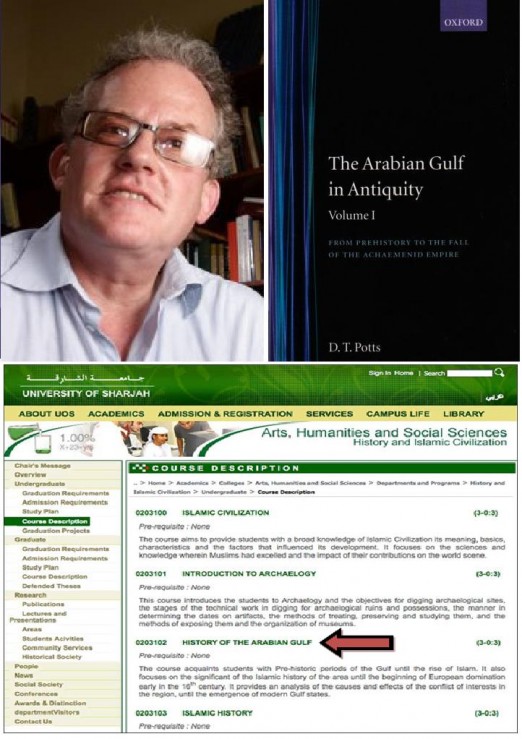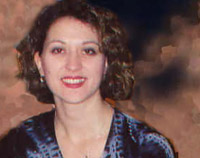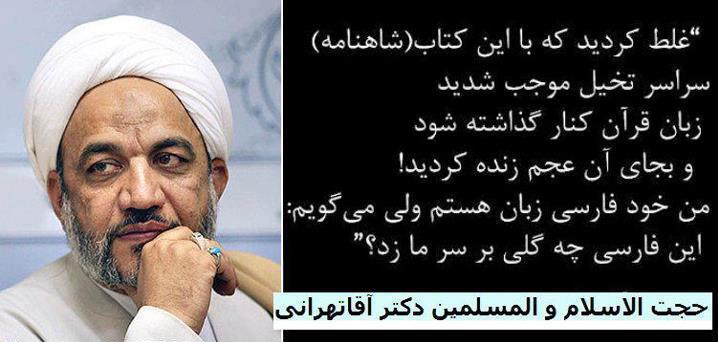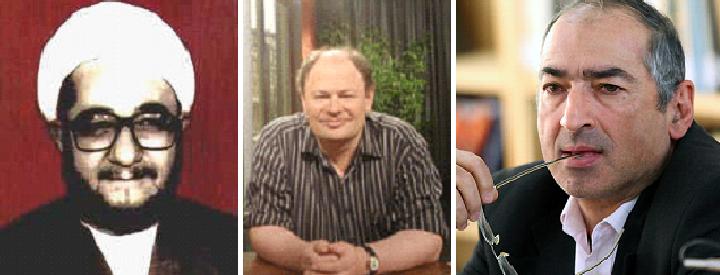The article entitled “The mullah’s rewrite of Iran’s ancient history: Don’t overlook this atrocity” written by Sheda Vasseghi for the World Tribune (September 15, 2009).
Sheda Vasseghi has a Master of Arts in Ancient History, with honors, emphasis on Ancient Persia, from American Military University (West Virginia) and a Master of Science in Business Administration from Strayer University (Washington, DC). Ms. Vasseghi is an adjunct professor of history at Northern Virginia Community College. She is also a correspondent with Freepressers in relation to Iran’s affairs. Ms. Vasseghi is a spokeswoman for Azadegan Foundation, a non-profit organization in support of a secular, democratic Iran. She joined persepolis3D in 2003 in handling historical consultation on Iran’s history as well as public relations matters. Ms. Vasseghi may be contacted in relation to the following: (1) planning exhibitions for advertising purposes in promoting historical and cultural awareness of ancient and modern Iran (2) educational services such as conducting and providing classes, workshops, and seminars featuring interviews and speeches in the field of Iranian affairs (3) custom writing services in the field of Iranian affairs and (4) writing of articles for professional journals in the field of Iranian affairs. Ms. Vasseghi may be contacted at [email protected].
Readers are also reminded that there are many Iranian Studies professors outside of Iran (such as Sheda Vasseghi) and also inside Iran who oppose the historical revisionism of the authorities, Eurocentrists, pan-Turkists, pan-Arabists, etc. Nevertheless, the Vasseghi article has accurately exposed the process of historical revisionism that is taking place. The pictures and captions below illustrate those authorities and professors supporting historical revisionism.
The pictures, videos and accompanying captions displayed in this posting did not appear in the original World Tribune article by Sheda Vasseghi.
==========================================================
The Islamic Republic’s butchery of Iran’s ancient history is beyond belief and comprehension.
The clerics’ audacity and blatant hatred for Iran spews from every page written by approved scholars. Iranology suffers from the lack of sufficient primary sources — especially native — making the task of balanced fact-finding more difficult. But any degree of bias observed in foreign sources about ancient Persians is nothing compared to the negativity, falsehood, and insufficient information provided by the Islamic Republic to Iranian children.
Hussein Ravazadeh claims in a speech in Tehran (June 2011) that ” History is written by Zionists…Iran never had a king named Cyrus the Great nor a king named Darius…they made Cyrus our king simply because he liberated some Jews…this has proven scientifically and recently verified from Germany …just because he A quick survey of 2005-06 history textbooks for middle school (grades 6-8) shows that over 1300 years of Iranian history as one of the ancient superpowers prior to the Moslem invasion is covered in approximately 37 pages while more than 2.5 volumes of materials are dedicated to Islam, its founder, and Iran’s post-Islamic history (mid-7th century to present). With more than half of the 37 pages devoted to pictures and maps, it is fair to say that 1300 years of history is crammed into 17 pages of actual written content. It goes without saying that putting this part of history in 6th grade textbook provides a convenient forum for simplifying materials. In reviewing all of these 37 pages dedicated to one of the most important ancient civilizations, the following general observations are made. There are no dates associated with any of the eras, characters, or major events. It is difficult to understand how history can be taught without dates. Only a few kings are mentioned for each dynasty and no explanation is provided as to why those few are named in the first place. No major events such as wars, peace treaties, or social and political developments are mentioned. In short, there are no discussions as to what 1300 years of ancient Iranian history contributed to civilization. There is nothing in the 37 pages indicating that the Achaemenid Persia was the first ancient world empire, and prior to Islam Iran was a superpower for 13 centuries. An article posted on Iranian.com describes the above three academics (left to right: Amélie Kuhrt from England-winner of “Islamic Republic of Iran World Book Prize 2010“, Wouter Henkelman from Holland (recipient of consistent funding for regular Iran trips), and Zainab al-Bahrani) as having “…completely discredited any positive reference to Cyrus [the Great], his legacy and any and all things Persian and Iranian…ridiculing all things Persian”. The strident anti-Iranian attitude of the above three at the conference prompted one of the audience members to state publicly at the venue that “…this is an anti-Iranian conference”! Another report on CAIS has noted that “Amélie Kuhrt…is known for her anti-Iranian postures among the British Academics“. The overall tone is negativity towards Iranian monarchs, who define the nation’s culture and history, and all leaders of the Iranian communities, who helped build and protect the country. The ancient Persians are described as greedy, unjust, chaotic, and selfish. According to the textbook, Iranian leaders accomplished nothing of importance for the common good, and that the people of Iran hated their leaders and way of life. There is no mention of the ancient Iranian prophet, Zoroaster, who is credited with being the first monotheist. Most scholars agree that Zoroaster lived around 1700 BCE. That makes Zoroastrianism the dominant religion in Iran for at least 2700 years, and yet the middle school history textbook barely mentions it, let alone its teachings. There is nothing in the 37 pages about Persian society, daily life, commerce, warfare, technology, and international diplomacy. As a misogynistic regime, there is no hint as to the relatively liberal status of women in ancient Persia. The names of famous Iranian women who were queens, monarchs and warriors are completely disregarded. There is no discussion about the development of the Persian language or the invention of cuneiform. As a history textbook, it is baffling to find that myths are actually taught as history. Incorrect information and religious propaganda are boundless. In short, Iran’s ancient history has been sterilized and faces extinction. Hatred of the Persian Language: Hojat-ol-Islam va Al-Moslemeen Agha-Tehrani states “You [People of Iran] made an error to become engaged/participate in the fantasies of this book [Shahname], to set aside Arabic and instead to revive the Ajam [non-Arab or Persian]. I am Persian-speaking but say: what “flower” (colloquial: pride/honor) has this Persian bestowed upon us/upon our heads?“ Median Empire (728-550 BCE) – 5 pages The events leading up to the conquest of Assyria by Babylonian-Median alliance is not discussed. The textbook claims that because of the friendship of the Lydians and the Babylonians, the Medes were no longer threatened by external forces. The Median Empire is marginalized and its downfall is attributed to the kings’ life of leisure, greedy nobility, abuse of the people, and high taxes collected from neighboring tribes. Achaemenid Empire (550-330 BCE) – 10 pages The Achaemenid kings important to world history such as Cyrus and Darius are not referred to as “the Great.” Incorrect and inadequate information are given regarding the origin of the name “Achaemenid,” the relationships between Cyrus and Darius or Cyrus and the Median ruling house, conflict between the Persians and the Medes, and the conquest of Lydia and other nations by Cyrus. The book also suggests that Cyrus’ motivation for conquest was to become wealthy. Nothing is mentioned of Cyrus’ famous bill of rights cylinder and his decree in freeing the Jewish captives from Babylonia while taking on the financial responsibility to rebuild their temple. No mention of ancient Jewish communities was noted. The book states that some experts believe Cyrus was great, as if Iranians do not. No reason is given as to why he would be considered great even by his own enemies. Professor Pierre Briant well-known for his tome “From Cyrus to Alexander: A History of the Persian Empire, Eisenbrauns, 2002”. Despite claims to the contrary, close examination of Briant’s text reveals a distinct circumspect Eurocentric (or neo-Eurocentric) view of ancient Iran. The narrative of Briant’s text (like the writings of Kuhrt, Henkelman, etc.) essentially runs contrary to the historiography school of past doyens of Iranian Studies such as Professor Richard Nelson Frye, the late Professor Shapour Shahbazi and the late Professor Roman Ghirschman. This may partly explain why Briant, who is closely aligned with Amélie Kuhrt, Wouter Henkelman and blogger-archivist Jona Lendering (see below) has been so well received by a number of Iran establishment authorities. The events surrounding the death of Cyrus’s younger son Bardiya and his relationship with his older brother and king, Cambyses, are incorrect. The role of the usurper Gaumata responsible for Bardiya’s death is misrepresented at the expense of Iranian leaders, who saved the fragile empire from destruction. The book claims that the Median and Persian ruling families were unjust and cruel to the people. Rebellions without details are generally emphasized to show that the Persian rulers were hated. The brilliant administrative skills and innovations of Darius and the ability of the Iranian leaders in managing an unprecedented empire comprising of 23 nations are not mentioned. The book states that the Greeks were the most important neighbors to the Persians when in fact the Achaemenid political strategy considered Mesopotamia, Egypt, Central Asia, and India as the most important regions. None of the famous Persian-Greek wars or their aftermath is mentioned. The fall of the Achaemenids is attributed to the fact that nobody had any say in the matters of the country but the monarch, and that is why they eventually became corrupt. Apparently, the greed of the nobility caused further suffering for the people. Alexander’s invasion of Iran is mentioned in one sentence, and the bravery of the Iranian defenders during that invasion is not discussed. Alexander/Seleucids (330-247 BCE) – 2 pages Only two pages are dedicated to this era. Nothing substantive is mentioned. Alexander’s desire and subsequent actions to mix the Persians and the Greeks are not discussed nor the effect, if any, of Hellenization on the Achaemenid Empire. The textbook does not cover how Alexander used Iranian soldiers, commanders, and governors for his eastern conquests and management of the empire. Parthians (247 BCE-224 CE) – 9 pages According to the textbook, the Iranian noble families helped the Parthians in pushing out the foreign Seleucids, but only for personal gain. The Romans are slave-owners mostly in pursuit of leisure. Jesus Christ is introduced as savior of the people from the hands of the evil Romans. The textbook states that Jesus appeared in Palestine during these difficult times while his Jewish heritage is omitted. Jesus is portrayed in a limited but political capacity. He is defined as a defender of those in suffering. According to the textbook, the Romans, who abused the Christians, after some time decided to become Christians too. The fall of the Parthians is attributed to the weakness of the kings, greed and power hungry nobility, and Parthian liberal attitude towards religious matters. -جعل نام خلیج فارس توسط رئیس پلیس امنیت اخلاقی ایران-News report from Iran in which a government official (Chief of Morality Police) refers to the Persian Gulf by pan-Arabist terminology. Note previous citation of Professor Daniel Pott’s 2-volume textbook “The Ar..bian Gulf in Antiquity”. Sasanians (224-651 CE) – 11 pages The book claims that Ardeshir I, founder of the Sasanians, rose to power because he promised the Zoroastrian priests that he would revive the religion if they support him in overthrowing the Parthians since the Parthians did not know how to manage the country. Ardeshir is credited with specifically stating that the rise of Buddhism and Christianity is one of the unattended problems. According to the book, those Iranian nobles who supported Ardeshir did so only for personal ambition. However, despite the rise of the Sasanians, religious chaos continued because people were free to practice their religion. The relationship between Armenia and Persia is marginalized, and the continuous Roman-Persian conflict over Armenia is not discussed. Mani and Mazdak, two radical and independent socio-religious figures, are sympathized as oppose to the Sasanian rulers. The political and social implications caused by the respective preachings of Mani and Mazdak are not discussed. The textbook accuses Sasanian rulers from becoming very wealthy by taxing people and that most of the tax collected was not used for the benefit of the people. Persophobia’s Common ground: (left) The late pan-Islamist activist Ayatollah Sadegh Khalkhali (1926-2003) who labelled Cyrus as “a tyrant…a liar” (Molavi, 2005, p.14) (middle) Jona Lendering whose Eurocentric view labels the history of Cyrus the Great as “Shah propaganda” (right) Dr. Sadegh Zibakalam [صادق زيباکلام] has declared that “I would not give/exchange a single hair of an Arab…for hundreds of Cyrus’… !“ The textbook incorrectly claims that the Sasanian society was divided into two classes: the nobility and the common folk. It further claims that nobility had many privileges including education while commoners were not allowed to attend school. Nothing is mentioned of the large middle class, the dehghans, created by the Sasanian monarchs to balance the society. An alleged letter from the prophet of Islam to Sasanian king asking him to convert as well as the king’s audacity to reject such an invitation are mentioned as well-known history. Not surprisingly, the book claims that the righteous Moslem invaders were able to defeat the corrupt and cruel Sasanians, and bring freedom and justice to the people, who willingly accepted Islam. Volumes of books in many languages have been written on Iran’s 1300 years of pre-Islamic history. One of the most respected, comprehensive set is The Cambridge History of Iran which has devoted 2600 pages without pictures to this era. Yet the Islamic Republic only found enough written material to cover 17 full pages directed to 6th grade students most of which contain deliberate misinformation and anti-Iranian sentiment. The mullahs are using Iran and its resources to further a warped religious agenda at the detriment of the Iranian people and the international community. In this process, they are systematically destroying a nation’s understanding of its past given such a past is more advanced, humane, and liberal than the Islamic Republic’s Constitution of the 21st century. Stay tuned for more on the ongoing Iranian genocide at the hands of the Islamofascist clerics.
 Professor Daniel Potts of the University of Sydney (top) and his 2-volume textbook “The Ar..bian Gulf in Antiquity” (bottom) used today as a standard reference in Arabian universities such as the University of Sharjah. In the above book, Potts argues that the Persian Gulf was known as Ar…b Gulf since pre-Islamic times. Professor Potts is strongly supported by Iran establishment authorities and vigorously promoted by select individuals in Iranian Studies venues in the West. His most recent theory is that Cyrus the Great was not Persian but an Elamite.
Professor Daniel Potts of the University of Sydney (top) and his 2-volume textbook “The Ar..bian Gulf in Antiquity” (bottom) used today as a standard reference in Arabian universities such as the University of Sharjah. In the above book, Potts argues that the Persian Gulf was known as Ar…b Gulf since pre-Islamic times. Professor Potts is strongly supported by Iran establishment authorities and vigorously promoted by select individuals in Iranian Studies venues in the West. His most recent theory is that Cyrus the Great was not Persian but an Elamite.








